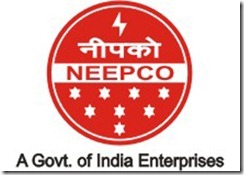By Sujit Chakraborty

New Delhi, Mar 30 : India is all set to build 558 roads at a cost of Rs 500 billion along the border with two hostile neighbours -- China and Pakistan -- in a bid to effectively counter the former, which is working at a break-neck speed to execute world-class infrastructure along the Indo-China and Indo-Pakistan border region.
Sources in the Union home ministry and Border Roads Organisation confirmed the report and added that the 27,986 kms of road projects are expected to be completed by 2030 in a phased manner. In the first phase, a total of 277 road projects have been earmarked to be completed at a cost of Rs 248.86 billion. The total length of the projects is estimated to be 13,100 kms.
However, maximum priority has been attached to the completion of all the road projects along the Indo-China border. To ensure time-bound completion of all the road projects, the BRO has recently moved 46 of its units to Arunachal Pradesh, 21 units to Sikkim, 33 units to Uttarakhand , seven units to Himachal Pradesh and 61 units to Jammu and Kashmir .
This apart, the central government has also decided to build an all weather road along the 1,417 km long Indo-Myanmar border region besides construction of at least 50 helipads to ensure quick reaction from the air force and the infantry, in case of any eventuality.
India had redrafted its military doctrine on building border infrastructure along the Indo-China region as road and rail connectivity at the international border areas are now seen as a force multiplier in a real war situation, as they help faster movement of equipment and quick mobilisation of troops against any enemy build up.
To ensure time-bound implementation of all these projects besides making an on-the-spot study of the available resources and additional requirements, Defence Minister A K Antony accompanied by the Army Chief V K Singh visited all the sensitive posts along the Indo-China border region. Later, the Antony interacted with the jawans deployed along the border posts and also held a high level meeting with the commanders and others posted in the region.
Similarly, Union Home Minister P Chidambaram also toured the Arunachal Pradesh including the border districts Tirap and Changlang besides Manipur and Mizoram to get a feel of the border areas.
While the leadership in New Delhi has finally begun execution of its massive road network projects along the Indo-China border region, it is still ignoring expansion of rail network in the border areas of sensitive the north-east region. The recent rail budget did not mention anything about its proposed eight projects to build 277 km long rail line at a cost of Rs 2,692 crore with neighbouring countries.
The five pending projects in Bhutan are: the 58-km Kokrajhar-Gelephu, (Rs 302 crore), the 51-km Pathshala-Nanglam, (Rs 753 crore), the 41-km Rangia-Sandrup Jhonkar via Darrang, (Rs 581 crore), the 23-km Banarhat-Samtse, (Rs 205 crore) and the 18-km Hashimara-Phunt Sholing, (Rs 168 crore).
The three pending projects in Nepal are: the 12-km Nepalganj road to Nepalganj (Rs 149 crore), 15-km long Nautanwa to Bhairwaha, (Rs 176 crore) and 56-km New Jalpaiguri to Kakrabitta, (Rs 358 crore).
On the other hand, China has already expanded its rail network up to Tibet . Now it is working on another plan to extend its rail line from Lhasa to its second largest city of Xiagaze to get the access to its strategically located Chumbi valley. This valley is close to the Sikkim and Siliguri corridor, connecting the entire north-east through rail and road network.
Besides the rail network, China has also expanded its road network along the Indo-China border region in the last decade. According to sources, China has so far constructed three major highways, of around 6,000 km, besides 55 more roads along the border.
Significantly, the Centre has decided not to reopen the historic Stilwell Road despite intense pressure, mainly from the trading community. This road has been caught up in complications as both the Indian security agencies and the Myanmar government are reluctant to reopen this historic road. Myanmar is apprehensive of the militants which hold sway over its Kachin province, and might create major law and order problem if this road is reopened.
On the Indian side, the Stilwell Road is 61 km, on the Chinese side its 632 km, and the major stretch lies on the Myanmar side, at around 1,033 km. China has, however, started developing a 1,739 km long road from Kunming in Yunnan province to Pangsau pass on the Indo-Myanmar border.
China is also helping Pakistan to develop highways on Jaglot-Skardu Road and Sazin-Thakot Road besides preparing a feasibility report on the Karakoram highway-Dushnabe Road within the disputed Pakistan-occupied Kashmir. Besides, China is also funding Pakistan for its ambitious power projects and other infrastructural development within PoK.













